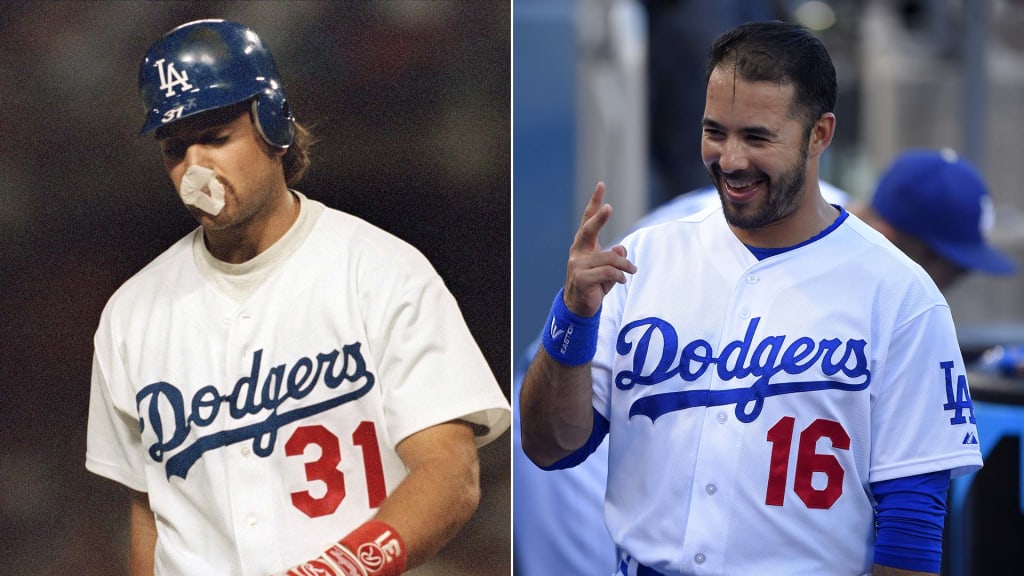
LOS ANGELES -- This is not a defense of the Dodgers trading Mike Piazza in 1998. It was tough to take then and has aged even worse.
But it should be noted that in a roundabout way, the Piazza trade at least helped Andre Ethier become a Dodger. Trade trees sometimes wind their way into such unexpected outcomes.
Of course, the Piazza trade will only go down in history as the most unpopular, if not plain boneheaded, in the history of the Los Angeles Dodgers. It was made by studio executives from the media company that bought the club from the O¡¯Malley family, without the knowledge or input of soon-to-be-former general manager Fred Claire.
That¡¯s what happens with a witches¡¯ brew of greed, power, ego and gross miscalculations by both sides. The studio execs felt no player could leverage against them upcoming free agency into a record $100 million contract. The player¡¯s side was equally misguided, convinced it had ultimate leverage over a team that would never trade a homegrown future Hall of Famer with a family link to Tommy Lasorda and a fairy-tale backstory.
Everyone involved turned out to be wrong. On May 14, 1998, a disgruntled Piazza and third baseman Todd Zeile were sent to Florida for a disgruntled Gary Sheffield, Bobby Bonilla, Charles Johnson, Jim Eisenreich and Manuel Barrios. The media execs also were unaware of Sheffield¡¯s no-trade clause, which he leveraged into an extra $10 million to waive, an expensive and embarrassing lesson for the same media execs.
It was one of those trades that hurt both clubs. Piazza was flipped to the Mets, as all the Marlins wanted out of the deal was to shed payroll in a scheme involving TV rights and a franchise sale, as Claire wrote in his autobiography. Two owners and seven GMs later, Dodgers fans are still bitter about the betrayal.
So bitter, in fact, that few acknowledge how well Sheffield performed as a Dodger, with a monstrous .998 OPS in 526 games in Los Angeles. But the Dodgers got little or nothing from the other four players in the deal, and Piazza went into the Hall of Fame with a Mets cap on his plaque. Piazza is so bitter, in fact, he refuses any attempts by the Dodgers toward a reconciliation, two owners later.
The front office power play didn¡¯t even immunize the Dodgers from future contract squabbles. Three years later, Sheffield once again was disgruntled with his pay, calling the Dodgers liars while calling out club president Bob Daly. Ultimately, Sheffield was shipped by new GM Dan Evans to the Atlanta Braves for starting pitcher Odalis Perez, outfielder Brian Jordan and young pitcher Andrew Brown.
That didn¡¯t work out for Los Angeles, either, as Sheffield averaged 34 homers and 115 RBIs over the next four years, although the Dodgers did get one All-Star season out of Perez.
The media company had one final act in this melodrama, selling the Dodgers in 2004 to Boston developer Frank McCourt, who named 31-year-old Paul DePodesta general manager. At the end of Spring Training that year, DePodesta acquired talented but disgruntled outfielder Milton Bradley from the Indians for Brown and outfield prospect Franklin Gutierrez.
Bradley had just been demoted to the Minor Leagues after a run-in with Indians manager Eric Wedge for not running out a pop fly. DePodesta said at the time that Bradley was ¡°everything we¡¯re looking for¡± and downplayed Bradley¡¯s volatile reputation as ¡°overblown.¡±
But Bradley had issues while a Dodger. He was suspended twice, once for taking a plastic bottle that had been thrown onto the field and throwing it back into the stands. He also had separate clubhouse confrontations with teammate Jeff Kent and a Los Angeles Times beat writer. After the 2005 season, the Dodgers replaced DePodesta with Ned Colletti, whose first trade was to send Bradley and infielder Antonio Perez to the A¡¯s for outfield prospect Andre Ethier.
In this chain of trades, the Dodgers finally came out a clear winner. Bradley was a part-time player for the A¡¯s and, despite a big playoff series in 2006, was traded midway through 2007 to the Padres, coincidentally for Brown again.
Meanwhile, Ethier became a Dodgers outfield fixture for a decade, twice an All-Star with one National League Silver Slugger Award, one Gold Glove and eight appearances in the postseason. He retired after the 2017 season.

